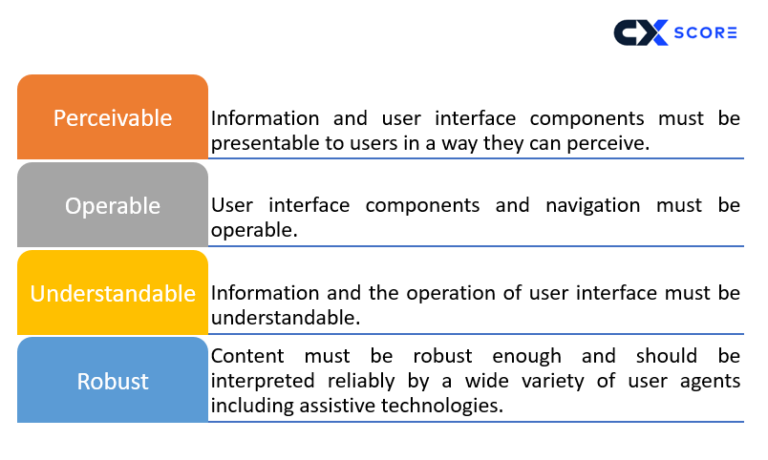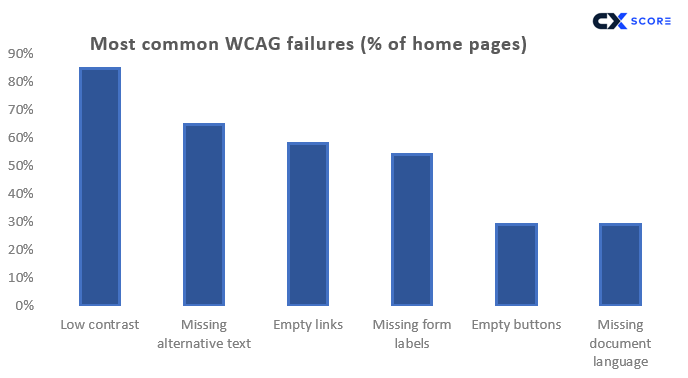Today, websites and applications are vital tools for communication, commerce, education, and more. Ensuring that these digital platforms are accessible to everyone, regardless of disability or impairment, is both a social responsibility and a business imperative for companies in the digital economy. Web accessibility and accessibility testing stands as a cornerstone, ensuring that everyone, including individuals with disabilities, can effectively perceive, understand, navigate, and interact with digital content. However, achieving comprehensive web accessibility is not without its challenges.
In this post, we explore what accessibility testing is, why it’s important, the challenges it presents for companies and digital product teams, and the benefits of incorporating web accessibility testing into your organization’s application development lifecycle.
Web Accessibility Challenges
Let’s delve into some of the common challenges organizations face in the pursuit of web accessibility. Understanding and overcoming these challenges are crucial steps toward incorporating Web Accessibility into your application design, development, and testing processes.
- Lack of Awareness: Many organizations and web developers may not fully grasp the importance of web accessibility or comprehend its far-reaching implications leading to a lack of prioritization and resources.
- Inadequate Training: Developers and content creators often lack sufficient training in accessible design practices, hindering effective implementation.
- Complexity of Guidelines: The Web Content Accessibility Guidelines (WCAG) can be intricate and challenging to interpret, especially for those not well-versed in the technical aspects of web development.
- Rapid Technological Advancements: The fast-paced nature of web technology development introduces new features and technologies that may not inherently prioritize accessibility.
- Legacy Systems and Content: Older websites or applications may not have been designed with accessibility in mind, necessitating complex and resource-intensive retrofitting efforts.
- Budget Constraints: Some organizations perceive web accessibility implementation as an added cost, leading to resistance in allocating resources for necessary changes.
- Inaccessible Third-Party Content: Websites often incorporate third-party content, such as plugins or widgets, which may lack accessibility considerations, contributing to overall inaccessibility.
- Mobile Accessibility: Ensuring accessibility across various devices, especially mobile devices, presents challenges due to differences in screen sizes and interaction methods.
- Testing and Monitoring: Regular testing and monitoring for accessibility compliance may be overlooked, allowing issues to go unnoticed or unaddressed.
- Legal and Compliance Issues: The increasing awareness of legal requirements for web accessibility has resulted in a surge of lawsuits. Organizations may face legal consequences if their digital assets are not accessible.
- User Diversity: Web users exhibit diverse needs and abilities. Meeting the needs of all users, including those with disabilities, poses a continuous and evolving challenge.
Despite these challenges, organizations can prioritize and overcome them through comprehensive accessibility testing. Accessibility testing ensures that digital content is designed to be inclusive, allowing individuals with disabilities to access and use websites, applications, and other digital platforms effectively.
What is Accessibility Testing?
Accessibility testing is the process of evaluating digital content (websites, web applications, mobile apps, documents, and more) to determine its accessibility and usability for individuals with disabilities. It aims to ensure that people with disabilities can perceive, understand, navigate, and interact with digital content effectively. Accessibility testing focuses on several aspects, including:
- Visual Impairment: Ensuring content is readable by screen readers and presented with proper text alternatives for images and visual elements.
- Hearing Impairment: Providing captions or transcripts for multimedia content and ensuring that audio content is accessible.
- Motor Impairment: Ensuring digital interfaces are operable through keyboard commands or assistive technologies for individuals with limited dexterity.
- Cognitive Disabilities: Creating content that is easy to understand and navigate for users with cognitive challenges.
- Adaptability: Ensuring content is responsive and adaptable to various assistive devices or user preferences.
Accessibility testing typically includes both manual and automated testing using tools and software to evaluate compliance with established accessibility standards like the Web Content Accessibility Guidelines (WCAG) maintained by the World Wide Web Consortium (W3C).
Founding Principles of Accessibility Testing
The four principles that form the basis of the accessibility methodology are Perceivable, Operable, Understandable, and Robust (POUR), as defined by the W3C. Refer to the below diagram for more details:

Why is Accessibility Testing More Important Than Ever?
The potential business impact of accessibility testing can’t be overstated. According to The Drum – “65% of consumers with a disability have abandoned a purchase due to poor accessibility. According to an evaluation of over a million websites carried out by accessibility specialists WebAim, 98% don’t meet basic accessibility needs.“ Shockingly, companies with non-compliant websites are anticipated to lose a whopping $6.9 billion annually to competitors with compliant sites.
These figures underscore the crucial need for accessibility testing, not just as a legal requirement but as a strategic imperative for organizations aiming to maximize their reach, user engagement, and financial performance.

The Benefits of Accessibility Testing
By prioritizing accessibility testing, organizations not only comply with legal standards but also unlock opportunities for broader audience reach, improved brand reputation, and enhanced overall user experience. Below are some of the benefits of accessibility testing:
- Inclusive User Experience: Accessibility testing ensures that digital content is designed to be inclusive, allowing individuals with disabilities to access and use websites, applications, and other digital platforms.
- Legal Compliance: It also helps organizations comply with laws and regulations related to digital accessibility, reducing the risk of legal challenges and penalties.
- Enhanced Brand Reputation: Prioritizing accessibility contributes to a positive brand image, demonstrating an organization’s commitment to inclusivity and social responsibility.
- Expanded Audience Reach: Accessible digital content reaches a broader audience, including individuals with disabilities, older adults, and users with diverse devices or assistive technologies.
- Improved SEO Performance: Accessibility standards and guidelines align with UX design and SEO best practices, improving digital experiences, making digital content more discoverable, and enhancing search engine rankings.
CX Score: AI-Powered Accessibility Testing
At CX Score, we are excited to be at the forefront of digital accessibility testing, helping companies use the power of AI to ensure websites meet stringent WCAG requirements with unprecedented speed, cost savings, and compliance. We’re here to help you navigate the complexities of web accessibility with an AI-powered platform that helps companies achieve compliance, but also embrace the full potential of digital accessibility, to create more inclusive, effective, and engaging digital experiences for everyone.



